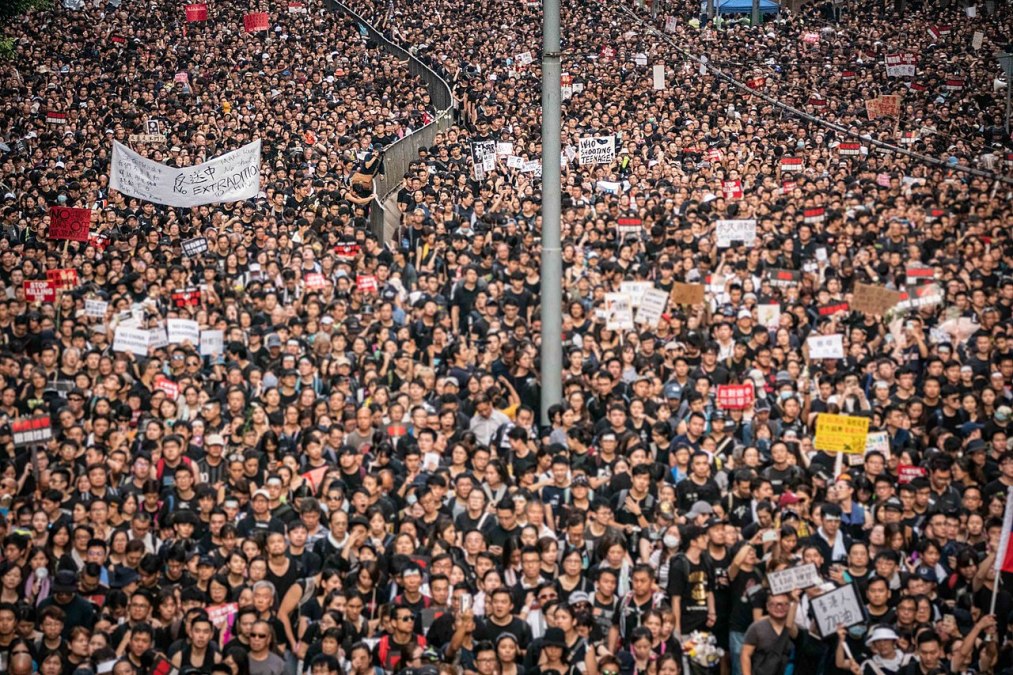How China’s government used social media against movements in Taiwan, Hong Kong

The Chinese government has adopted known disinformation techniques and utilized social media harassment campaigns to try to increase its influence in Asia, according to new findings that add to a growing body of research.
In recent months, two distinct Chinese internet campaigns have sought to influence public opinion with fake news ahead of an election in Taiwan, and intimidate pro-democracy protesters in Hong Kong by posting their personal data online. Both efforts mimic similar Russian operations, and reflect how governments’ use of social media for propaganda efforts have become an everyday reality for much of the world’s population.
The latest research, published Wednesday by the threat intelligence firm Recorded Future, comes after international journalists and nongovernmental organizations also have detailed the interference in semi-autonomous Hong Kong and the disputed region of Taiwan over the past year.
“From a tactical standpoint, the mainland Chinese government views both Taiwan and Hong Kong as domestic information space,” researchers wrote. While China is not known to use such tactics abroad, the report is the latest evidence that the ruling Communist Party is using the contested regions as a laboratory for an emerging strategy.
Fake news in Taiwan
Before Taiwan’s presidential election, which pitted independent-minded Tsai Ing-wen against Han Kuo-yu, who advocated closer ties to Beijing, Chinese operatives used content farms to broadcast fabricated news articles meant to sway public opinion. Much like Russia’s Internet Research Agency has littered U.S. social media platforms with divisive content, China-aligned groups translated false or misleading English-language articles into simple Chinese. Then, they used an artificial intelligence tool to broadcast messaging to Taiwanese users.
Typical content included suggestions that President Tsai had faked a doctorate degree, or that Joshua Wong, a leading Hong Kong demonstrator, had kicked an elderly man during a visit to Taiwan, according to prior reports. Some Chinese-backed media also suggested Wong has conspired with members of Tsai’s progressive political party against Beijing.
Other content originated with sources in mainland China, such as the popular Weibo and WeChat platforms. Chinese state media also provided the source for much of the information later beamed to potential Taiwanese voters.
China also utilized Facebook Fan pages to broadcast disinformation, resorting to contractors in Malaysia or Chinese residents outside the mainland in order to subvert Facebook security controls.
The efforts failed to convince voters, however. Citizen watchdog groups organized in the months prior to the election to debunk rumors, trace nefarious content on Facebook back to its origin and create YouTube videos meant to help Taiwanese voters understand how disinformation works, according to a report in the Guardian.
Tsai Ing-wen ultimately won the election in what was widely interpreted as a rejection of Beijing’s advances.
Details on HKLeaks
Meanwhile, the rumors involving Joshua Wong were only one front in China’s effort against Hong Kong protesters. State media agencies bought Twitter ads to spread disinformation about the protests, social media watchdogs previously found, while clusters of Facebook and Twitter accounts also tried pushing narratives meant to undercut the protests’ message.
HKLeaks appeared in August 2019 as a website and a Twitter feed dedicated to publishing pictures and data about pro-democracy advocates in Hong Kong. The site’s stated intention was to “debunk rumors” critical of the Chinese government. It also posted individuals’ headshots, full names, current occupations, dates of birth, phone numbers, current addresses, Facebook account details and a summation of the accusations against them.
More than 900 protesters, eight teachers, 61 journalists, and 23 people accused of harassing the police were included on the site, according to Recorded Future. More than 2 million people followed Facebook pages that shared HKLeaks’ posts. Researchers stopped short of directly tying the effort to Chinese operatives, though they said “HKLeaks is almost certainly the result of a highly coordinated effort and heavy resource investment.”
The site’s administrators frequently interacted with Chinese state media agencies, and inspired a network of copycat websites, Recorded Future added.
“We expect more of these resources and tactics to be deployed in overseas influence operations on social media platforms over the course of the next year,” researchers noted.



